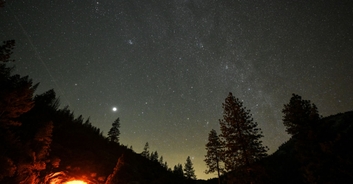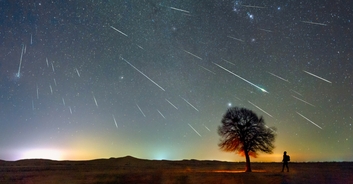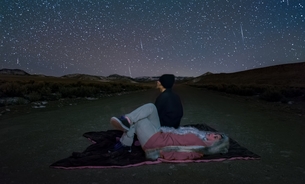The first major meteor shower of 2020 kicks off this weekend, according to scientists.
According to NASA, "a meteor is a space rock — or meteoroid — that enters Earth's atmosphere. As the space rock falls toward Earth, the resistance — or drag — of the air on the rock makes it extremely hot. What we see is a ‘shooting star.’ That bright streak is not actually the rock, but rather the glowing hot air as the hot rock zips through the atmosphere. When Earth encounters many meteoroids at once, we call it a meteor shower."
Relive the moment Buzz Aldrin planted the US flag on the moon:And while the thought of meteors zooming towards Earth may seem rather unsettling, these space rocks aren't usually very big.
Jackie Faherty PhD, senior scientist, and senior education manager in the Department of Astrophysics and the Department of Education at the American Museum of Natural History in New York City, told Yahoo Lifestyle:
"We get all of these teeny tiny pieces — some as small as a grain of sand, some a little bit larger — that burn up in the atmosphere of the Earth and put on a gorgeous show for us."

These are the four main meteor showers of 2020:
The Quadrantids meteor shower occurs on January 3 and 4 and is best seen in the northern hemisphere. It will have more than 100 meteors per hour. "Definitely worth it to get out there and try and see some of these fireballs in the sky," Faherty says.
Up next is the Eta Aquarids meteor shower in the early hours of May 4 to 6. Due to how speedy the meteors are, you'll have to be vigilant if you want to see them.
On August 11 and 12, we will have the Perseids meteor shower, which Faherty refers to as the “show-stopper meteor shower of the year”.

"This is usually a gorgeous event," Faherty says, adding that it’s a “fantastic light show.”
And finally, the Geminids meteor shower will occur on December 13 and 14.
It’s "very special," according to Faherty, as this particular meteor shower does not come from a comet but rather an asteroid. You can expect over 100 meteors an hour, although they will be harder to detect if there is a full moon.


.png_II23cD?tr=h-184)


